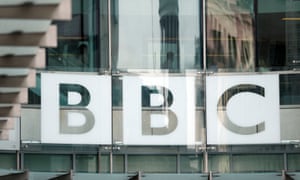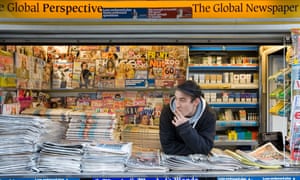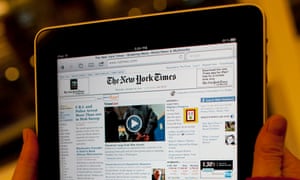1. How did the language and selection of images in the coverage create a particular representation of young people?
The way the language was phrased in this article present the youth as the main reason as to why the riots were taking place.
Phrases such as: ‘childish destructiveness’ ‘feral youth’, the ‘hoodies’ and ‘yobs’ were used to describe young people. Additionally, the pictures used were all of young people in hoodies rioting.
2. Why does David Buckingham mention Owen Jones and his work Chavs: the demonisation of the working class?
3. What is the typical representation of young people – and teenage boys in particular? What did the 2005 IPSOS/MORI survey find?
The typical representation of young people was of that they were mainly describes as the main ones taking part in the riots and creating chaos. Moreover, Women in Journalism analysed 7,000+ stories involving teenage boys published online, 72% that were negative stories.
The 2005 IPSOS/MORI survey found that 40% of newspaper articles that had young people involved focused on violence, crime or anti-social behaviour.
4. How can Stanley Cohen’s work on Moral Panic be linked to the coverage of the riots?
Stan Cohen implies in his definition of a moral panic, there is a struggle for ‘ownership’
of the issue. Different people – politicians, community leaders, media commentators,
‘experts’ – offer different accounts of what is happening; although they often receive most attention if they can come up with simple explanations, and propose simple solutions. Yet how they do this often reflects their own social or political interests: the issue becomes an opportunity for them to make broader points, and to promote their own views. Stanley Cohen's work on moral panics can be linked to the coverage of the riots, as people such as the older generation who had no involvement in the riots would be scared/worried as all they saw were the destruction of buildings and violence.
5. What elements of the media and popular culture were blamed for the riots?
On all sides of the media debate, there was a rush to instant judgment – or at least instant opinion. Advocates of participatory media would see this as indicative of healthy public dialogue.
6.How was social media blamed for the riots? What was interesting about the discussion of social media when compared to the Arab Spring in 2011?
Social media is one main aspect as to why the riots occurred. This was evident when there was a group of thugs who used the social platform 'Twitter' to instigate the riot that occurred in Tottenham.
7.The riots generated a huge amount of comment and opinion - both in mainstream and social media. How can the two-step flow theory be linked to the coverage of the riots?
The two-step flow model can be linked to the coverage of the riots, as highlighting certain events that take place during riots can influence certain young people into actually taking part in riots themselves. This can be due to the fact that the media mainly based the blame of the riots on the youth.
8. Alternatively, how might media scholars like Henry Jenkins view the 'tsunami' of blogs, forums and social media comments? Do you agree that this shows the democratisation of the media?
Henry Jenkins in fact saw these blogs and forums as a positive thing, as he believes that through the internet and technology people are allowed to express their opinions through these platforms and so. I believe that it does show show democratisation of the media, however at the same time the media hold on to a lot of power in order for them to filter out what is suitable or not.
9. What were the right-wing responses to the causes of the riots?
The right-wing responses to the causes of the riots were mainly aimed towards the youth. News institutions such as The Daily Mail, demonized the youth by using animalistic imagery to describe the way the youth behaved during the riots.
10. What were the left-wing responses to the causes of the riots?
However, the left-wing responses to the causes of the riots are that they aren't blaming the youth, but in fact that the reason as to why the youth did take part in the riots, was due to the lack of services for the youth.
11. What are your OWN views on the main causes of the riots?
I do believe that the youth did play a role into the riots. However I don't think the main cause was due to them, I believe that the riots occurred due to the death of Mark Duggan. Furthermore, the internet also played a significant role into why the riots developed and got out of hand. But in my opinion, I do think they were sparked by the killing of Mark Duggan.
12. How can capitalism be blamed for the riots? What media theory (from our new/digital media unit) can this be linked to?
Capitalism can be blamed for the riots due to the higher class may have instigated the youth to behave immorally. One theory that can be linked to this is hegemony as elite people are the ones that take control and power, therefore, pushing the youth to react in a way for equality.
13.Were people involved in the riots given a voice in the media to explain their participation?
No, people who were involved in the riots were not given a voice in the media to explain their participation in the riots. However, other people spoke for them, such as historians, journalists. This therefore, was not a honest or true explanation given to the audience resulting in the people who did take part being miss judged.
14. In the Guardian website's investigation into the causes of the riots, they did interview rioters themselves. Read this Guardian article from their Reading the Riots academic research project - what causes are outlined by those involved in the disturbances?
Some causes outlined by those involved in the disturbances were; the high number of people who were unemployed, gang related issues, political issues and social media - mainly BBM.
15. What is your own opinion on the riots? Do you have sympathy with those involved or do you believe strong prison sentences are the right approach to prevent such events happening in future?
In my opinion, I believe that the riots did get extremely out of hand. I also do sympathise with the minority who rioted for a valid reason. However, I don't sympathise with the ones who rioted for no reason other than for having fun. Additionally, I don't believe that prison sentences were the right approach to prevent events happening in the future. The riots mainly occurred due to the shooting of Mark Duggan and some people rioted for valid reasons, such as unemployment alongside other matters. Therefore, I believe these matters should've been discussed with the people who lived withing the community, instead of putting them into jail.
 But what soon became clear was that almost everything was still in doubt. At the end of a campaign that dominated the news for months, it was suddenly obvious that the winning side had no plan for how or when the UK would leave the EU – while the deceptive claims that carried the leave campaign to victory suddenly crumbled.
But what soon became clear was that almost everything was still in doubt. At the end of a campaign that dominated the news for months, it was suddenly obvious that the winning side had no plan for how or when the UK would leave the EU – while the deceptive claims that carried the leave campaign to victory suddenly crumbled. 


